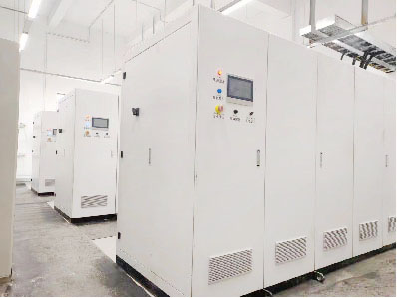Ozone generator is used for bleaching and decolorizing pulp in the papermaking industry and has a certain decolorizing effect on dye wastewater. The amount of ozone has a certain decolorizing effect on the color development and auxiliary color groups of such dyes, but the effects of ozone on various organic dyes are different. The decolorization time for basic dyes is 90% and the reaction time is 2 minutes, and for direct dyes it is 5 minutes.

In comparison, azo dyes are easily oxidized. The ozone layer can be used for decolorization, which can decompose the conjugated oxygen electronic system through ozone. Hydroxyazine is a basic component of dyes. When they react with ozone, their first reaction is an electrophilic attack on them by ozone (which is almost always present in solution).
For example, phenolphthalein of p-hydroxybenzylmethane-based pigments can be reversibly opened through the lactone ring, and the ring closure produces color and discoloration, and can be used as an indicator. Phenolphthalates of bases react with ozone. The large number of electrons in the C=C bond in the ozone layer can make the ozone layer thinner under the 1.31 addition condition. When the ozone layer reacts with the typical triphenylmethylamine pigment malachite green, the nitrogen-carbon skeleton (C=C bond) of the dimethylamine site also plays a role. Methymine pigments with C=N bonds react chemically with ozone, and ozone reacts electrophilically with the nitrogen atoms of the C=N bonds. The ozone group attacks the C=N bond, and the dimethyl group generates an imidazolidine ring, which cuts off the conjugation and decolorizes it.
With the vigorous development of molecular biology, microecology has brought its ecology to the molecular level. In fact, both proteins and nucleic acid molecules are organic matter. They are composed of carbon, hydrogen, oxygen, nitrogen, phosphorus, and sulfur (C, N, O, P or S), and the capsid of the virus is made of polyethylene. Composed of protein subunit units. Each shell particle is connected by non-covalent bonds and twisted together symmetrically. The protein is a nucleic acid composed of multiple nucleotide chains.
OH among them is electrically neutral (R-OH) as a whole, but if you look at it from the inside, part of it contains more negative charges (such as oxygen atoms), because this part of the group (R-OH) has “additional” bonding electrons and is therefore negatively charged: the other part has more positive charge (e.g. a hydrogen atom), this part of the base lacks bonding electrons and is therefore positively charged. If other similar groups are close, the mutual attraction between positive and negative charges will produce a weak bond, which is the so-called hydrogen bond, for example, between polypeptide groups, between isotopes of nucleotides, DNA or RNA Pairing of isotopes in molecules can easily form hydrogen bonds.
Although one hydrogen bond is weak, many hydrogens combine to form the tough cell walls of plant cells. Look at ozone again. It is a strong oxidant with a high oxidation potential (2.07ev). All elements have extremely strong adsorption electrons, which can oxidize each other and reduce themselves. Oxidation, nucleic acid decomposition, protein disintegration, antigen denaturation, negative detection, and color deterioration.
 max ozone generator
max ozone generator
